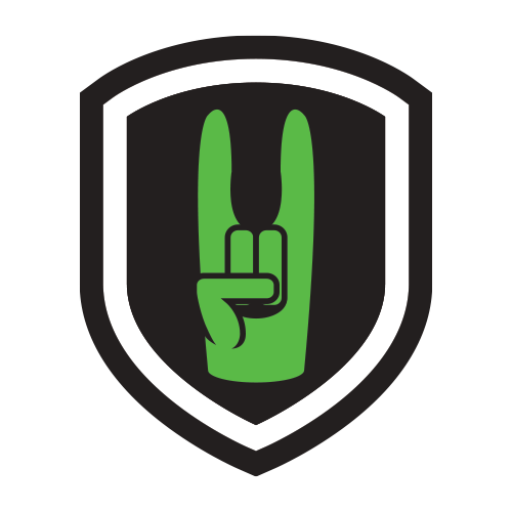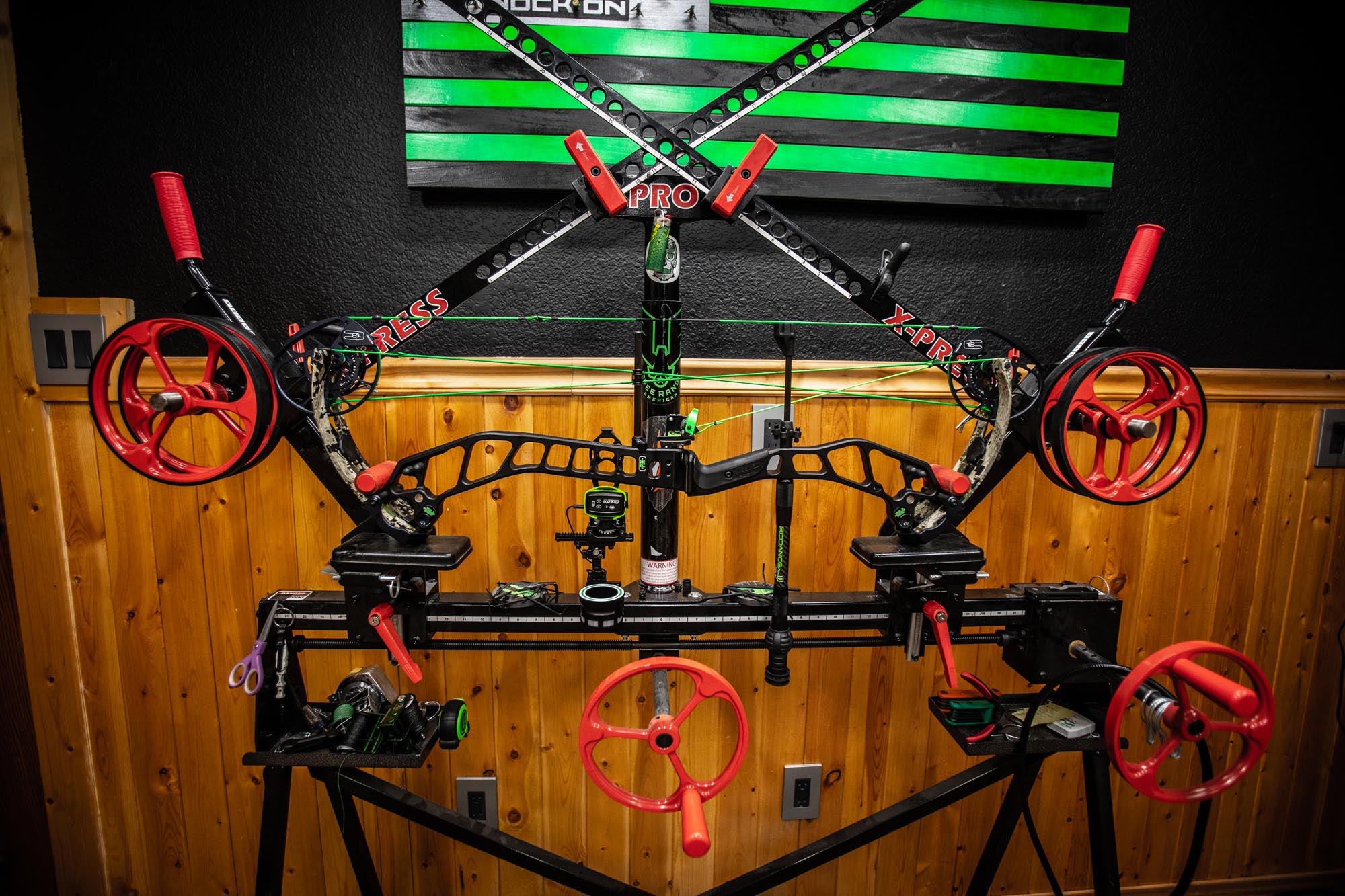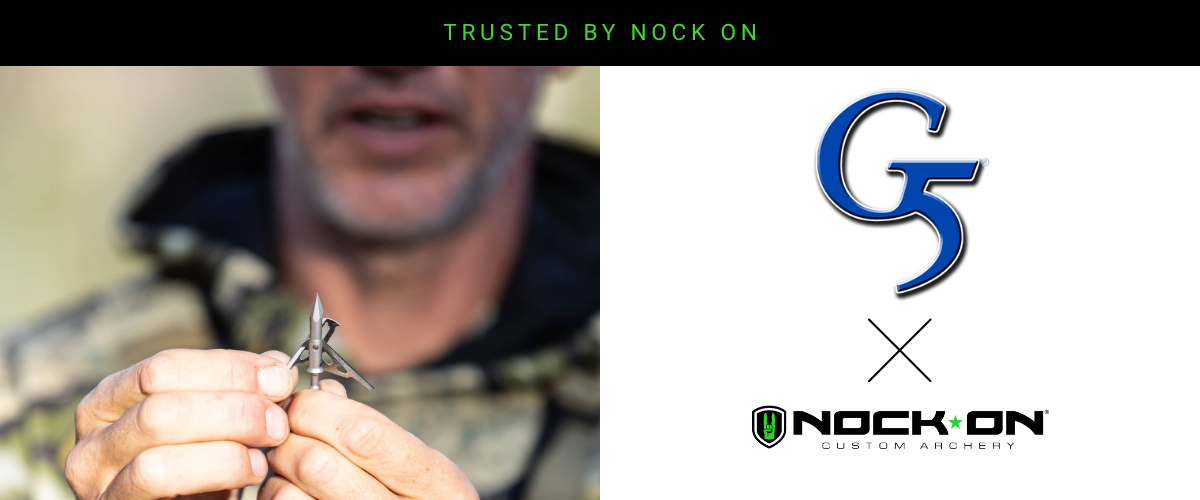I want to give you a quick walkthrough on the basics of how to properly use a bow press for your compound bow maintenance. There are many different types of bow presses available on the market today.
You’ve seen me use several over the years. The X-Press has been one of my go-to bow pressing tools, but today I want to focus on the core principles of what you should be looking for whenever you either purchase a bow press, adjust your existing one, or especially if you take your bow to a pro shop and you’re letting someone else press it.
With today’s highly parallel limb designs, proper bow pressing technique is more critical than ever. The wrong approach doesn’t just risk your strings—it can compromise your entire bow’s structural integrity. Understanding these fundamentals will help protect your archery investment and ensure your equipment performs exactly as designed.
Core Principles of Safe Bow Pressing
The fundamental concept is straightforward: use your bow press to compress the limbs, not the riser. This is the difference between flexing a bow the way it’s designed to work versus forcing it into an unnatural position that creates stress points.
Years back, many bow presses pushed down directly on the riser, creating pressure where the bow wasn’t designed to handle it. With today’s parallel limb compound bow designs, this approach is particularly dangerous. These aggressive limb angles create tremendous force that, when improperly pressed, transfer strain directly to the riser’s weakest points.
What you’re looking for is a bow press that mimics the bow’s natural draw cycle. Think about it: when you pull back your string, those limbs flex from their pivot points at the limb pockets. That’s exactly where your bow press should be applying pressure—right at that natural hinge point where the limb first contacts the riser.
Critical Contact Points
The most critical adjustment when using a bow press is ensuring it contacts the limb directly in line with the axle area. This isn’t arbitrary—manufacturers intentionally reinforce this section of the limb to handle the additional load. Pressing elsewhere creates leverage points that can twist limbs, damage cams, or even cause catastrophic failure.
Step-by-Step Bow Press Setup Guide
When setting a bow in the bow press for the first time, follow these steps:
- Position the press arms to contact only the limbs at their natural pivot points
- Verify that center fingers are pressing against the limbs, not the riser
- Make adjustments immediately if alignment is incorrect
X-Press Setup Instructions
For my X-Press bow press setup, I carefully adjust those contact points so they’re coming down precisely where the limb naturally pivots on the pocket. Once positioned, I lock everything into place to prevent any shifting during the pressing process.
Proper Pressure Application
From there, I bring the arms up and adjust the wheels to make even contact with the center of each limb. This is non-negotiable—never press on or near the cam, and avoid the outer edges of the limbs as this causes twisting. The goal is perfectly balanced pressure across the limb surface.
Special Considerations for Split Yoke Designs
For bows with split yokes where cables attach to the outside of the limbs, pay extra attention to avoid pressing against the outside edge of the axle. The bow press must never interfere with your cable systems or bushings.
Final Verification
Once everything is properly aligned—pivot points secure, even pressure on both sides, centered on the limbs, aligned with the axles—you’re ready to apply pressure. When correctly set up, it should only take a few inches of movement to relieve string tension. If you’re cranking and cranking without results, something’s wrong with your setup. Stop and reassess.
Types of Bow Presses for Different Needs
Linear Bow Presses
Linear bow presses are popular for their ease of use and compatibility with most compound bow designs. They apply pressure directly to the limbs in a straight-line motion, making them ideal for today’s parallel limb bows.
Portable Bow Presses
For hunters and archers who need field maintenance capabilities, portable bow press options provide convenience without sacrificing safety. These compact designs can be essential for emergency repairs during hunting trips or competitions.
Shop-Grade Bow Presses
Professional archery shops typically use heavy-duty bow press systems that can accommodate virtually any bow design. These versatile units allow for precise adjustments and are built for continuous use.
Common Bow Press Mistakes to Avoid
- Pressing against the riser instead of the limbs
- Applying pressure to the edges of limbs, causing twisting
- Pressing too close to the cams or cam modules
- Using a bow press not rated for your specific bow model
- Applying excessive pressure or cranking too quickly
Conclusion: Protecting Your Archery Investment
A properly pressed bow maintains its accuracy, consistency, and longevity. An improperly pressed bow becomes a ticking time bomb of potential issues from cam lean to catastrophic limb failure.
Next time you’re at the pro shop watching someone work on your equipment, verify they’re following these bow press safety principles. Your bow isn’t just a tool—it’s a precision instrument that deserves proper handling.
Whether you’re using a bow press on your own equipment or watching someone else press it, these guidelines aren’t suggestions—they’re requirements for protecting your investment. A few seconds of verification can save your hunting season and extend the life of your archery equipment.
Frequently Asked Questions About Bow Presses
How often should I press my bow?
Only press your bow when necessary for maintenance tasks like string replacement, peep sight adjustment, or serving repair. Unnecessary pressing puts additional stress on components.
Can I use any bow press for my compound bow?
No. Always verify that the bow press you’re using is rated for your specific bow model. Some high-performance bows require specialized pressing techniques.
What’s the biggest risk when using a bow press incorrectly?
Improper bow press technique can lead to limb failure, cam damage, or even catastrophic bow failure that could result in injury.
How can I tell if my bow has been pressed incorrectly?
Signs of improper pressing include visible limb twist, cam lean, cracked limbs, or sudden changes in bow performance and accuracy.
Do I need a bow press for basic maintenance?
While some minor adjustments can be made without a bow press, most string-related maintenance and tuning requires proper pressing equipment.






 massmonopoly
massmonopoly